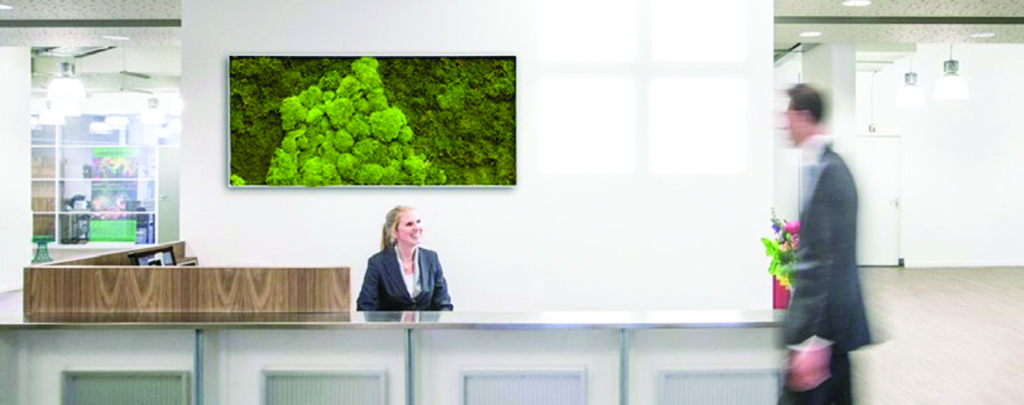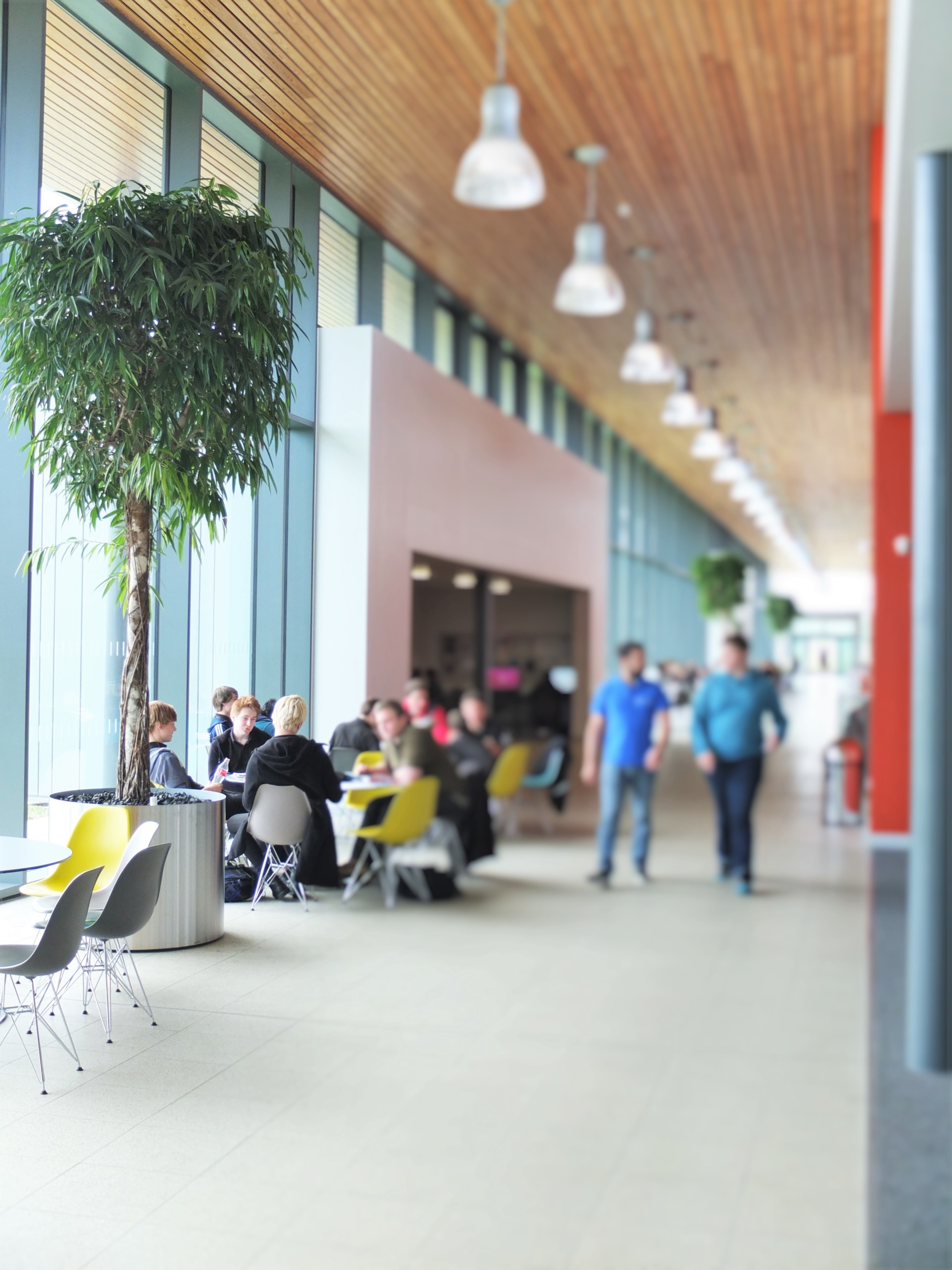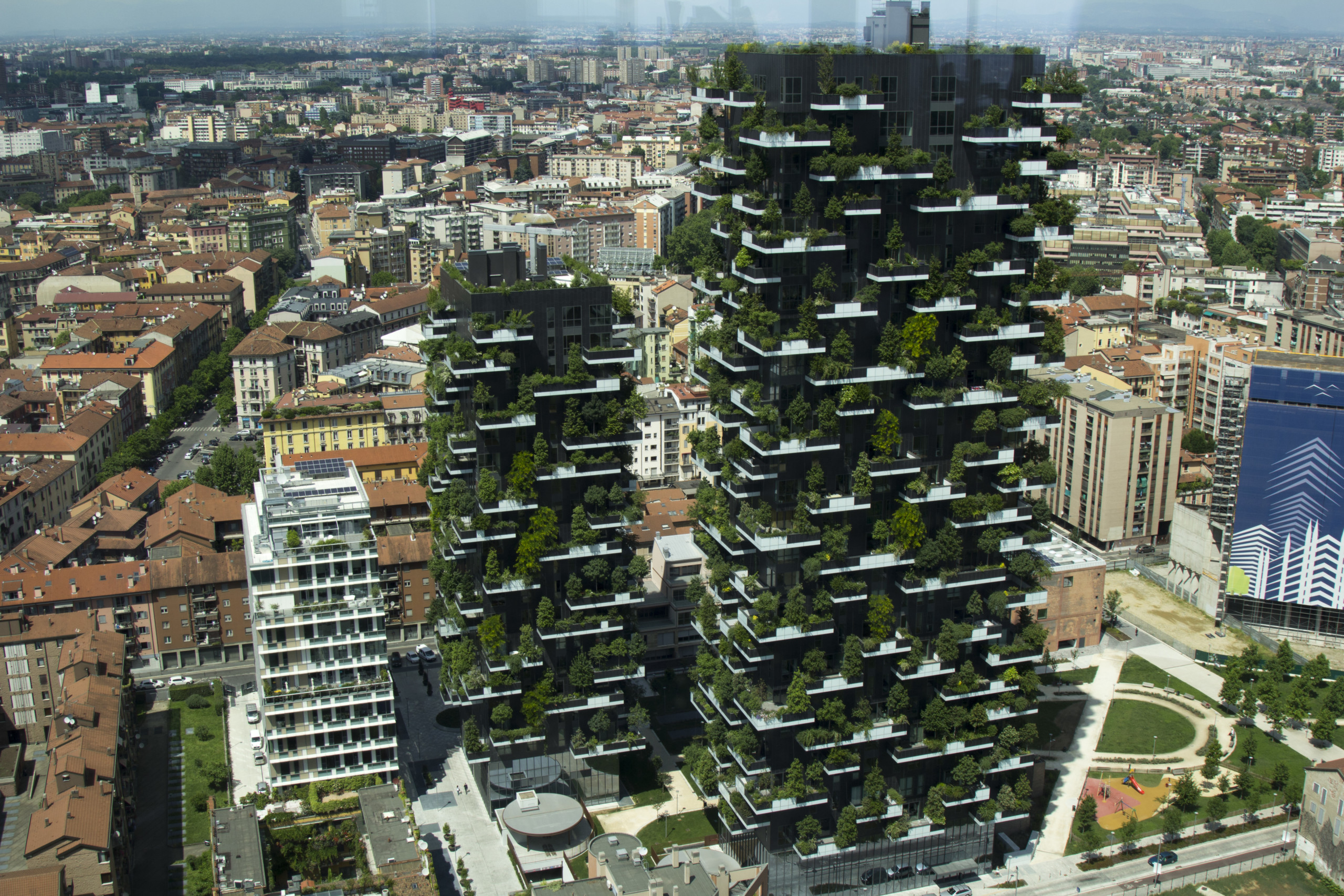
A natural connection: How contact with plants will pay dividends
-
24 January 2020
We hear a lot about our increasing remove from nature, as urbanisation grows along with our time spent indoors. Voices across the spectrum agree it’s not healthy not to be outdoors in natural surroundings for long periods of time.
However, for so many of us, office working and urban living is an unavoidable reality. We may glimpse a tree-lined street when we walk through a city or experience a rural blur of fields in our peripheral vision as we whizz along a motorway on our way from here to there, but we often lack a regular link to nature in our everyday settings.
Hence the growing call among designers and architects for biophilic design features in our buildings, which can be as simple as office plants, living walls or external landscaping.
I recently found myself perusing research into biophilia by sustainable architectural consultancy Terrapin Bright Green as I was looking to pull together evidence of the benefits of plant which went beyond their air-cleaning properties.
A growing number of our clients as for office plants because of the health benefits, but although we do a very good job at promoting the importance of clean air in our indoor environments, I know that is only part of the story when it comes to a desire of indoor planting.
At a simple level, we like the look of them, but their visual appeal is linked to something more deeper-set in our psyche, and can unlock the potential of indoor plants to improve our lives in more fundamental and wider-reaching ways.
Biophilia could be summed up as human’s innate and intuitive connection with nature. It harks back to our ancestors’ outdoor lives and simply, the fact that we are part of nature, despite the walls that block our view of it. As Terrapin Bright Green term it in their report ‘14 Patterns of Biophilic Design’, biophilia is ‘rediscovering the intuitively obvious.’
Obvious it may be, but how can it be achieved in a concrete jungle, where land and space in general is at a premium, and employers’ and builders’ budgets are tight?
 One answer is to point to the fact that biophilic design encompasses a range of features which range from small nods to nature to vast vistas of land and waterscapes, and many things in between. Simulations of nature, such as depictions or sounds of nature have been proven to effective on certain levels, as indeed have pot plants or floral displays.
One answer is to point to the fact that biophilic design encompasses a range of features which range from small nods to nature to vast vistas of land and waterscapes, and many things in between. Simulations of nature, such as depictions or sounds of nature have been proven to effective on certain levels, as indeed have pot plants or floral displays.
The office plant in the corner of your workspace may look unassuming, but each time you look at it, you are making a tapping into your instinctual connection with nature, even if it is not a conscious process. It really can be that easy. As Terrapin Bright Green puts it: ‘One of the benefits of biophilic design is that it involves design patterns that are ‘flexible and replicable strategies for enhancing the user experience’ and can be ‘implemented under a range of circumstances.’
Another argument is to look at the long-term picture. Investment now in biophilic elements around the workplace can reap financial benefits down the line. Terrapin Bright Green cites research which shows that 10% of employee absenteeism could be attributed to architecture with no link to nature. This 10% is no small consideration once you start to consider what this might relate to in financial impact.
The most clearly defined links between absenteeism and biophilia centre around anxiety and a general sense of wellbeing. Simply put, a connection with nature makes us happier and less stressed, as a range of studies attest. For example, research has shown that a visual connection with nature has been proven to lower blood pressure, improve mental engagement/attentiveness and positively impact attitude and overall happiness. What’s more, ‘neuroscientists have found that views of complex, dynamic natural scenes trigger many more interactions of the mu (opioid) receptors in the large rear portion of the visual cortex.
Viewing nature is literally a pleasurable experience. Views with less visual richness, such as a blank wall or a tree-less street, are processed in the small forward portion of the visual cortex and trigger far fewer of the mu receptors, triggering less pleasurable mental reactions’ (Terrapin Bright Green, citing Biederman & Vessel, 2006).
So we can start to build a picture of the effects a view of nature has on us, even if we are not aware of these processes when they occur.
Absenteeism is one thing; the productivity of those present is another. If employees are working in a stimulating environment, more work and better work is done, and natural elements have again been proven to boost our productivity and general sense of happiness in our working environment.
A study by Park et al in Environmental Health and Preventative Medicine found on the physiological effects of walking through a forest found that overall parasympathetic activity, which occurs when we feel relaxed, increased by 56.1%, whereas sympathetic activity, which occurs when we feel stressed, decreased by 19.4% in subjects who walked through the forest.
Although a forest walk isn’t a daily possibility for many of us, the introduction of biophilic elements can work along the same lines. A simple pot plant on your desk, a view of trees from the window, or a water feature nearby can have notable effects on productivity and presenteeism, with a positive impact, in turn, on a business’s bottom line.
Urban forest
One suggested approach Terrapin Bright Green makes for using design to work biophilia into projects is to ask: ‘how can biophilic design improve performance metrics already used by the client […] such as absenteeism, perceived comfort, health care claims, asthma, ticket sales, or test scores.’ These are all tangible indicators of success in a business, educational institution or healthcare setting and are all affected by an increased connection with natural elements.
The concept of biophilia is a fast-growing area of design and architecture. A few years ago we in the planting business marvelled at the Bosco Verticale, a ‘vertical forest’ in Milan, where two apartment block towers were built with integrated trees and other vegetation, equivalent to 30,000 square metres of forest and undergrowth.
Part of architects Stefano Boeri Architetti’s vision for reintegrating urban dwellers with nature, this flagship project has now been followed by plans for a Smart Forest City in Cancun, which will feature, in its 557 hectare footprint, some 400 hectares of green spaces housing 7.5 million plants (around 400 different species). Some 260,000 of these will be trees, equating to 2.3 trees per inhabitant, and the rest will be composed of shrubs and bushes. The psychological benefits of living in such an urban Eden must surely be manifold.
We hope this audacious approach to landscape architecture will be the natural projectory for biophilic design, as more and more of us sign up to its many benefits, the most fundamental of which is surely as sense of happiness.
As Terrapin Bright Green puts it: ‘Above all, biophilic design must nurture a love of place.’
Discover more:
The Economics of biophilia. Click here.
14 Patterns of Biophilic Design. Click here
Smart Forest City – Cancun. Click here.
Bosco Verticale – Milan. Click here.
https://www.stefanoboeriarchitetti.net/en/project/vertical-forest/


